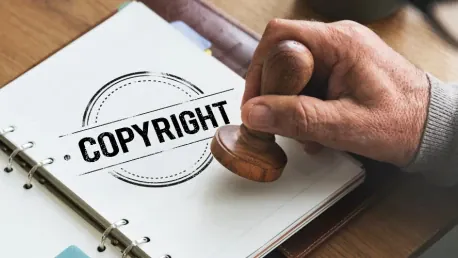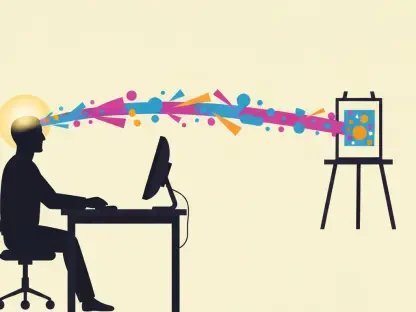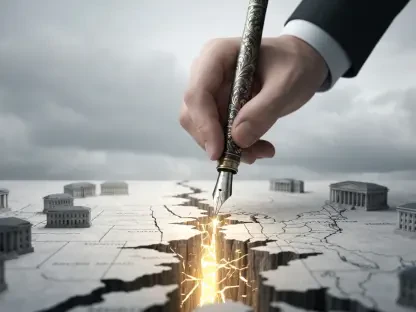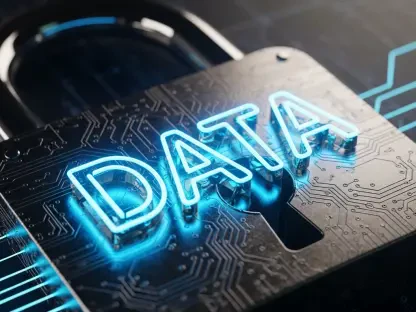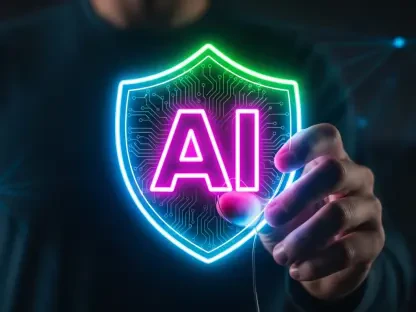The United States Copyright Office (USCO) has released a pivotal report on January 29, 2025, addressing the copyrightability of materials generated by artificial intelligence (AI) systems. This report is the second in a series of three, aimed at clarifying the complex relationship between copyright law and AI innovations. The first report, published in July 2024, focused on digital replicas, while the third report, expected later in 2025, will explore legal implications related to AI models trained on copyrighted works. The USCO’s inquiry began with a Notice of Inquiry (NOI) in August 2023, which garnered over 10,000 comments, shaping the analysis and recommendations in this report.
Human Authorship as a Cornerstone
AI Exclusivity and Copyright
In an era where artificial intelligence is rapidly advancing, issues surrounding the exclusivity and copyright of AI-generated content have become increasingly pertinent. As creators and companies leverage AI technologies to produce various forms of content, the questions of ownership and intellectual property rights are moving to the forefront of discussions. Legal frameworks and policies need to evolve to address these complex issues adequately, ensuring that the interests of both creators and users are balanced. This evolving landscape also highlights the importance of transparency and ethical guidelines in the deployment and use of AI systems.
A central theme of the USCO’s report is the necessity of human authorship for works to qualify for copyright protection. The report emphasizes that works generated entirely by AI lack the essential human authorship element, rendering them non-copyrightable. This stance highlights the unwavering importance of human creativity within the copyright framework. While AI can generate content autonomously, the crux of copyright law hinges on the originality and creative expression inherent in human-generated works. By relying on human authorship, the law ensures that the principles of intellectual property remain grounded in human ingenuity.
As the digital age progresses and AI capabilities expand, the temptation to rely solely on AI-generated changes becomes more pronounced. However, the USCO’s insistence on the human element underscores a commitment to preserving the core values of creativity and originality. This unwavering stance not only preserves the foundational tenets of copyright law but also ensures that creativity does not become a mere algorithmic output. The necessity of human authorship acts as a guardrail against the devaluation of artistic and intellectual endeavors.
Prompt Selection and Authorship
In the ever-evolving landscape of AI technology, the report clarifies that the mere act of entering prompts into an AI system, irrespective of their complexity or detail, does not confer authorship status. This position acknowledges the role of AI as a facilitator rather than an originator of creative expression. However, it’s essential to understand that while detailed prompts can guide AI outputs, they do not reflect the human creative process in its entirety. Instead, prompts serve as instructions to the AI, lacking the hallmark of originality that is crucial for copyright protection.
Despite the sophistication of AI, its outputs stem directly from pre-programmed datasets and algorithms, devoid of personal insight and emotion. This delineation between human creativity and algorithmic assistance draws a clear boundary. Still, it leaves room for future discussions. As technology continues to evolve, this stance on authorship may undergo reassessment. Should AI develop the capability to better interpret and implement intricate human inputs, the boundaries of authorship may shift. However, for now, the input of prompts remains an insufficient foundation for claiming copyright protection, reasserting the primacy of human ingenuity in creative processes.
Mixed Content and AI as a Creative Tool
In scenarios where works contain both AI-generated and human-created content, the USCO report specifies that only the human contributions are eligible for copyright. While AI systems can enhance creative workflows, their role is auxiliary to the human creative process. Whether it’s for ideation, image editing, or generating background concepts, AI serves as a tool that aids human creators without overshadowing the distinctive human touch. This symbiotic relationship between AI and human creativity facilitates innovation while maintaining the integrity of copyright law.
The report also highlights that using AI to assist in the human creative process does not invalidate the copyrightability of the entire work, provided there is a discernible human-generated contribution. This means that as long as the final output is enriched with human creativity, the work remains eligible for copyright protection. The collaborative use of AI in human creativity showcases the dynamic interplay between technology and artistry, where machines empower creators without encroaching upon the domain of original authorship. This nuanced understanding reinforces that human agency in creative endeavors is irreplaceable and that the fusion of AI and human inputs must preserve the essence of human ingenuity to qualify for copyright protection.
Historical Context and Adaptability of Copyright Law
Evolution of Copyright Law
The USCO report underscores the historical adaptability of copyright law to novel technologies, recounting its evolution from accommodating photography to embracing computer programs. This adaptability demonstrates the law’s ability to evolve in concert with technological advancements, ensuring it remains relevant and effective. Despite the contentious attention centered on AI-generated content registrations, copyright law has maintained its foundational principles, reflecting a balance between stringent human authorship requirements and the realities of modern creative processes.
In recent years, numerous approvals have been granted under the 2023 guidance, evidencing the copyright system’s capacity to integrate new forms of creative expression while upholding the primacy of human authorship. The historical adaptability of copyright law doesn’t just reveal its resilience; it also highlights the law’s role as a dynamic framework. By encompassing a wide spectrum of creative practices and technological innovations, it safeguards the integrity and novelty of creative works. As AI continues to be a transformative force, this historical perspective serves as a reminder of the law’s flexibility and its commitment to fostering human creativity.
Legal Framework and Human Contributions
The USCO’s report delves into the legal framework surrounding authorship, delineating four primary categories where human contribution might intersect with AI-generated outputs. The first category involves the facilitation of the creative process, where AI assists but does not replace human creativity. For instance, AI tools might enhance image quality or generate raw ideas, yet the human creator’s input and vision remain pivotal. The second category addresses the usage of prompts, underscoring that detailed instructions inputted into AI do not amount to authorial control over the final output. This analogy is akin to commissioning a work wherein instructions are provided, but the individual giving directions is not recognized as a joint author.
The third category, expressive inputs, examines scenarios where human-authored works are fed into AI systems for modification. If the original human-created elements remain distinguishable and integrated into the final product, they retain their copyright status. This principle mandates that human contributions must be evident in AI outputs for them to be copyrightable. The fourth category involves the modification or arrangement of AI-generated content, emphasizing that human creativity in selecting, arranging, or significantly modifying AI outputs can meet the originality threshold required for copyright. Each category thus reinforces the need for a discernible human authorship component within AI-assisted creations, evaluated meticulously on a case-by-case basis to uphold originality and creative integrity.
Technological Advancements and Control
Technological advancements have significantly influenced various aspects of modern life, bringing both benefits and challenges. As new technologies emerge, they often reshape industries, create new opportunities, and raise questions about control and regulation. The rapid pace of innovation requires continuous adaptation and forward-thinking approaches to ensure that these advancements are harnessed responsibly and effectively.
Potential for Precise Human Control
The report acknowledges the potential evolution of AI technology to enable more precise human control over AI-generated outputs through prompts. This future technological trajectory suggests the increasing sophistication of AI systems, which may potentially allow for nuanced and controlled creative expressions influenced by human inputs. However, the report also cautions that these advancements might simultaneously minimize the human expressive component critical for copyright eligibility. This duality requires careful scrutiny to ensure that as technology evolves, the foundational principle of originality and human creativity remains intact.
In light of the ongoing evolution of AI capabilities, the report underscores the necessity for continuous assessment and possible revaluation of copyright principles. With technological advancements potentially altering the landscape of creative processes, it is imperative to consider both the opportunities and challenges they present. As AI systems become more adept at interpreting and executing intricate human prompts, the delineation between human-authored and machine-generated content may blur. This evolving paradigm calls for a vigilant approach, ensuring that the essence of human originality and creativity is preserved, even as AI technology enhances and expands the horizons of creative expression.
Expressive Inputs and Derivative Works
The report highlights specific scenarios where human expressive inputs are fed into AI systems to yield modified outputs. When an author uploads an original work and directs the AI to modify it—such as transforming a hand-drawn image into a photorealistic rendering—the human contribution remains integral and identifiable. These cases illustrate the retention of copyright status for human-authored portions within the AI-enhanced creations. This principle aligns with previous USCO decisions, such as the Sahni case, where the Board denied copyright protection due to the indistinguishable mix of human and AI elements in the final output.
In instances where the original human-created work is distinguishable within the AI-modified output, the creative input retains its copyrightability. This approach ensures that the human essence and originality within the altered work receive rightful recognition and protection. By maintaining the distinctiveness of human contributions, the copyright framework acknowledges the pivotal role of human creativity in producing unique and valuable creative works, even when mediated or enhanced by AI technologies. This nuanced understanding not only reinforces the integrity of copyright protection but also harmonizes the intertwined roles of human authorship and technological facilitation.
Arrangement and Creativity in AI-Generated Content
Human Effort in Arrangement
The intricate process of arranging complex systems often requires significant human effort, blending expertise and manual coordination to ensure an effective and cohesive outcome. From planning to execution, human ingenuity plays a critical role in organizing components in a manner that maximizes efficiency and functionality, underscoring the importance of skilled labor and attention to detail in achieving successful arrangements.
The 2023 guidance emphasized that human effort in arranging or modifying AI-generated works could reach the originality benchmark necessary for copyright protection. For instance, when AI tools are used in musical compositions or film editing, the human creator’s choices and creativity play decisive roles in producing the final work. The report illustrates that copyright protection is granted when human agency is evident in selecting, adapting, and arranging AI-generated content. This principle ensures that human creativity is recognized and safeguarded within the collaborative process involving AI technologies.
The integration of AI tools in various creative fields showcases the potential for innovation while preserving the core tenets of authorship and originality. In musical compositions, for instance, AI might generate melodic ideas or suggest chord progressions, yet the human composer’s decisions regarding arrangement, interpretation, and performance ultimately define the piece’s originality. Similarly, in film editing, AI might assist in cutting scenes or suggesting transitions, but the editor’s creative vision and interpretative choices determine the final narrative and aesthetic impact. By highlighting these examples, the report reinforces the necessity for human effort and creativity to meet the originality criteria essential for copyright protection.
Case-by-Case Evaluation
In light of emerging trends and evolving market dynamics, a flexible approach that tailors decisions to individual circumstances is often the most effective. This method recognizes the unique aspects of each situation, ensuring a fair assessment and outcome. By analyzing cases on their specific merits, stakeholders can address particular challenges and opportunities, fostering innovation while maintaining regulatory standards.
The determination of originality or creativity in human contributions to AI-generated content remains a case-by-case evaluation, as emphasized by the USCO report. Each instance of AI-assisted creation must be scrutinized individually to assess whether the human contribution meets the threshold of originality required for copyright protection. This approach ensures that the unique characteristics of each work are considered and that the integrity of the copyright system is upheld. The case-by-case evaluation process accommodates the diverse and evolving nature of creative practices involving AI, ensuring that copyright law adapts to contemporary innovations while maintaining its foundational principles.
By requiring individualized assessments, the USCO underscores that no universal standard can encompass the myriad ways in which AI technology intersects with human creativity. The nuanced application of copyright principles in AI-assisted creations aims to recognize genuine human contributions while preventing unwarranted claims based on mere algorithmic outputs. This meticulous evaluation process highlights the dynamic interplay between human creativity and technological facilitation, ensuring that copyright protection remains grounded in originality and human ingenuity. Through this approach, the copyright system can effectively navigate the complexities of contemporary creative practices, fostering innovation while preserving the core values of authorship and creative expression.
Rejection of Sui Generis Law
Existing Legal Framework
In response to suggestions for a distinctive law to protect AI-generated works, the USCO and the majority of NOI comments expressed a strong preference for existing legal frameworks. They argue that additional protection could dilute human creativity and inundate the market with low-quality works. The consensus among stakeholders and legal experts supports the sufficiency of current copyright laws, emphasizing the role of human creativity at the core of the creative economy. This viewpoint underscores the belief that existing laws are versatile enough to address the complexities introduced by AI technologies without necessitating a separate legal regime.
The report articulates that an exclusive law for AI-generated works might inadvertently lead to a proliferation of subpar content, undermining the value of human-authored creations. By adhering to existing legal frameworks, the USCO reinforces the primacy of human ingenuity in the creative process while fostering a balanced approach to integrating AI technologies. This stance recognizes the potential of AI as a valuable tool in creative endeavors while preserving the integrity and originality of human contributions. The commitment to upholding existing copyright laws ensures that the evolving landscape of AI-assisted creation is navigated with due consideration for the enduring principles of authorship and creativity.
International Perspective
A comparative analysis within the report reveals a global consensus on the necessity of human authorship for copyright protection across jurisdictions. Countries exploring this issue concur on maintaining human involvement as central to copyright eligibility. This international perspective highlights the universal recognition of the importance of human creativity in the context of copyright law. By examining practices and legal interpretations across different regions, the USCO report underscores a shared commitment to preserving the human element in creative endeavors. This global alignment strengthens the foundation of copyright protection, ensuring that the principles of originality and creative expression are upheld consistently.
The report illustrates that jurisdictions worldwide have grappled with the implications of AI-generated content, arriving at similar conclusions regarding the indispensable role of human authorship. This consensus reinforces the view that copyright protection should remain anchored in human creativity, irrespective of technological advancements. The international perspective not only validates the USCO’s stance but also fosters a collaborative approach to addressing the challenges posed by AI in creative fields. By aligning with global practices, the USCO ensures that the principles of copyright protection are universally respected and that the integrity of artistic and intellectual endeavors is preserved across borders.
Key Takeaways
Reinforcement of Human Authorship
Despite significant advancements in AI technology, there remains a strong emphasis on the importance of human authorship in creative fields. The unique perspectives, emotions, and experiences that humans bring to their work cannot be replicated by machines. This reinforces the belief that human creativity and originality are irreplaceable, even as artificial intelligence continues to evolve and contribute to various industries. As AI tools become more prevalent, the collaboration between human creators and AI technology is likely to enhance the quality and diversity of creative output, rather than replace human authorship altogether.
The USCO’s stance on AI-generated works remains unchanged, reinforcing that content generated from mere prompts without additional human input is not copyrightable. This consistent position underscores the critical role of human creativity in the copyright framework. Creators integrating AI into their creative processes are reminded that only the elements of a work characterized by human authorship might be eligible for copyright protection. This emphasis on human contributions ensures that the originality and intellectual property rights of creators are preserved in an increasingly AI-enabled creative landscape.
The reinforcement of human authorship is not merely a legal formality but a fundamental principle that preserves the essence of creative expression. By upholding this standard, the USCO ensures that copyright protection remains a meaningful tool for recognizing and rewarding genuine human ingenuity. This stance also serves as a guiding principle for creators exploring the integration of AI in their work, encouraging them to harness technology without compromising the originality and distinctiveness of their creative outputs. The USCO’s clear and unwavering position provides a stable foundation for navigating the evolving intersections of AI and copyright law.
Continuous Assessment
The USCO report stresses the need for continuous assessment as AI technology evolves, recognizing that ongoing scrutiny is vital to maintaining the relevance and effectiveness of copyright principles. As AI systems advance and their capabilities expand, the distinctions between human and machine-generated content may blur, necessitating vigilant evaluation. This continuous assessment ensures that copyright protection remains anchored in the core values of originality and creative expression, even as the creative landscape transforms. By adapting to technological advancements, the copyright framework can effectively address emerging challenges and opportunities posed by AI.
Through continuous assessment, the USCO aims to strike a balance between embracing innovation and preserving the foundational tenets of copyright law. This approach acknowledges that the dynamic interplay between human creativity and AI technology requires flexibility and responsiveness. By proactively evaluating the impact of AI on creative processes, the USCO can provide guidance that reflects contemporary realities while upholding the enduring principles of authorship and intellectual property rights. This commitment to ongoing scrutiny underscores the importance of ensuring that copyright protection remains relevant, effective, and aligned with the evolving landscape of creative expression.
Conclusion
The United States Copyright Office (USCO) released an important report on January 29, 2025, addressing the copyrightability of content created by artificial intelligence (AI) systems. This report is the second installment in a three-part series aimed at clarifying the intricate relationship between copyright law and AI technologies. The first report, published in July 2024, delved into the realm of digital replicas. The final report in this series, anticipated later in 2025, will investigate legal aspects related to AI models trained using copyrighted works.
The USCO initiated this extensive examination with a Notice of Inquiry (NOI) in August 2023, which drew more than 10,000 comments from various stakeholders, helping shape both the analysis and recommendations in the current report. This comprehensive investigation is crucial given the rapid advancements in AI and the growing integration of AI-generated content in various industries.
The NOI responses revealed a broad spectrum of opinions and concerns regarding whether AI-generated works can or should be eligible for copyright protection. These issues are particularly significant as they could influence innovation and creativity in fields such as art, music, and literature. The USCO’s continued exploration aims to provide clear, enforceable guidelines to ensure that copyright law evolves in step with technological progress, ultimately balancing the interests of human creators, AI developers, and the public.
